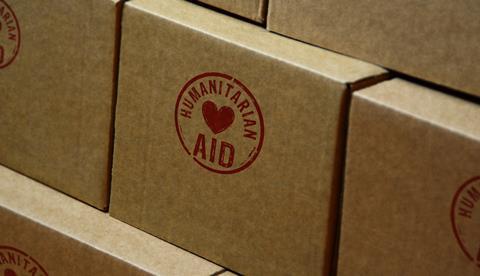Against a backdrop of escalating threats, NGOs must prioritise the health and wellbeing of their workforces, including those in remote or unstable locations. Here’s how.
NGOs operate in an increasingly complex environment and the threats confronting aid workers are rising significantly.
Maintaining the optimal conditions of NGO workers should be a priority in this sector.

Fortunately, there is evidence that organisations in the sector recognise the need to step up and take robust action on safeguarding their workforce and community, at multiple levels.
How the risks are evolving
The environments in which NGO workforces travel and work have always presented considerable risks to their security, health and wellbeing.
However, there is concerning evidence that these threats are rapidly escalating.
- The Aid Worker Security Database (AWSD) latest report reveals that 444 humanitarian aid workers were impacted by violence across 235 major attacks globally in 2022.
- International SOS data found that in 2023, there was a 15% increase in security-related assistance requests and an 8% rise in evacuation or repatriation requests from the NGO sector compared to the previous year.
- Last year alone, Iqarus treated around 10,000 patients who were working across the humanitarian aid sector in conflict-affected and post-conflict locations. This number highlights the immense physical and mental health strains endured by NGO workers on the frontlines.
How NGOs can manage the threats and protect aid workers
Operating in high-risk, fluid environments demand more than just reactive incident response. The dynamic landscape, fuelled by escalating conflicts, natural disasters, and emerging health threats, necessitates resilience and agility.
NGOs must proactively mitigate threats through comprehensive security awareness training and build robust capabilities for crisis management.
It is important for NGOs prioritise the health and wellbeing of their diverse workforce, including those in remote or unstable locations.
“Proactive measures, such as comprehensive security training and crisis management plans, are vital”
By leveraging location-specific risk expertise, they can overcome resource limitations and ensure operations continuity, ultimately fulfilling their critical mission despite the challenges.
Dr Cat Davison, regional medical director, Europe, Middle East & South Asia (EMESA) at Iqarus, comments: “Having robust clinical care backup is essential to address the complex health challenges faced by aid workers in these environments.
“Proactive measures, such as comprehensive security training and crisis management plans, are vital to protect those on the frontlines of humanitarian aid and ensure their health needs are met.”
“NGOs require comprehensive security strategies to ensure their operational continuity and personnel safety.”
Mike Rogers, security director at International SOS, adds: “Amidst escalating global challenges like pandemics, natural disasters, and geopolitical tensions, the critical role of NGOs becomes yet more important.
“Operating in environments often characterised by heightened risks, including volatile political situations, humanitarian crises, and various kinetic threats, NGOs require comprehensive security strategies to ensure their operational continuity and personnel safety.”
He adds that effective mitigation demands a multifaceted approach combining robust security protocols, real-time as well as forward looking intelligence, and tailored crisis response plans, adapted to the specific operating context.
Seven steps to take now
International SOS shares actionable advice for NGOs to safeguard their workforce and ensure business continuity in a complex landscape:
- Proactive risk management: regularly monitor and assess how medical and security incidents around the world may impact your staff and volunteers.
- Provide tailored training: ensure your workforce understands their individual risk profile and how they might be vulnerable in a particular destination. Particularly those who will be travelling to, or living in remote, austere and hazardous environments.
- Empower with knowledge: provide comprehensive access to up-to-date medical, safety, and location-specific travel information, empowering informed decision-making.
- Implement robust security measures: ensure protocols are tailored to different operating environments and risk levels. Conduct regular security audits and integrate security considerations into all operational planning and decision-making.
- Foster personal resilience: enable individuals to recognise and mitigate threats by providing training in personal safety, cybersecurity, bystander intervention, and cultural sensitivity.
- Streamlined communication: establish clear lines of communication between your organisation and workforces, for reporting security incidents and accessing support.
- Enhance mental health support: identify the unique stressors impacting your workforce and determine how your organisation’s culture can support positive mental health.














No comments yet